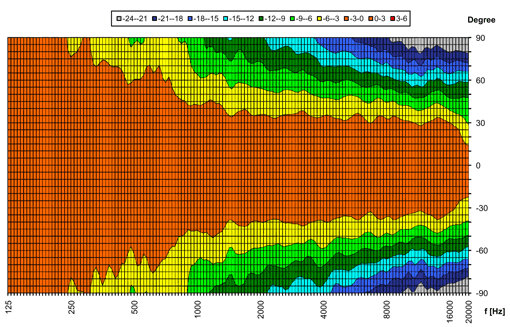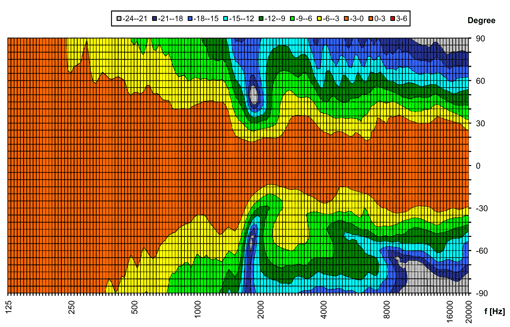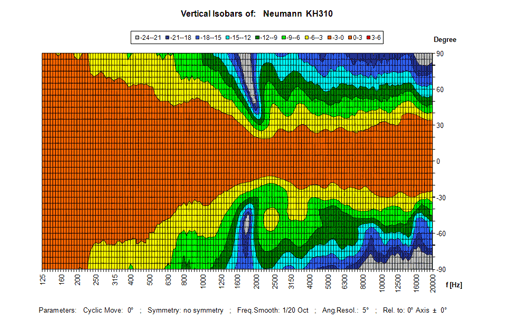Are you referring to the "line of sight" directivity principle?
No. I don't even know what that is.
False based on the line of sight directivity principle?
Demonstrably false based on actual measurements of real loudspeakers.Polar maps of real loudspeakers are too rare, but they do exist. Here are four published examples of 1" dome tweeters on flat waveguides:
1) Ascend Audio 6.5" 2-way, measured at Princeton Univ.
2) Outlaw Audio 5" 2-way, measured by James Larson (Audioholics), likely the best hifi loudspeaker reviewer working right now
3) RBH 5" 2-way, also measured by Larson
4) Monitor Audio 6.5" 2-way, my measurement. (Sorry, direct link to the polar map graph is blocked, search for "polar map.")
https://hometheaterhifi.com/reviews...-audio-silver-1-bookshelf-loudspeaker-review/
Note the general trend: nearly 180deg dispersion around the crossover, narrowing to about 140deg at 10kHz.
Now,
KH120 (factory data):
Roughly 110deg around the crossover, progressively declining to about 90deg at 10kHz.
So yes, it is clear that a 1" dome tweeter on a flat waveguide exhibits wider dispersion than a 1" dome tweeter on a contoured waveguide. One need not delve into 4D esoterica to observe that fact.
AAgreed. A similarly-sized two-way monitor with a port opening under the woofer will exhibit qualitatively similar dispersion pattern. As much as I don't find this pattern attractive, such design has its uses: in my case three of the surround speakers had to be placed close to the walls, so the back firing ports or hot back plates weren't acceptable.
To be clear, this passage does not show agreement with what I wrote above. I have not seen evidence that port location - note that one of my examples in the previous post had a
side mounted passive radiator - affects the vertical directivity. What clearly does is the center-to-center spacing. That is why coaxial speakers have substantially identical horizontal and vertical polars (affected by waveguide dimensions if not symmetrical). They have no center-to-center spacing. Steering the null by varying driver phase or delay can also affect the null resulting from non-coaxial drivers. It is common in both home and pro speakers to steer the crossover null downwards, to reduce floor reflections and decrease sit-stand frequency response variation.







